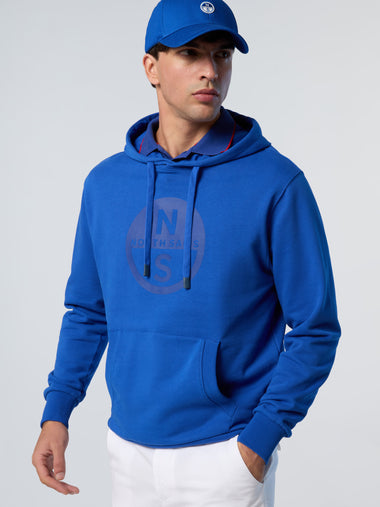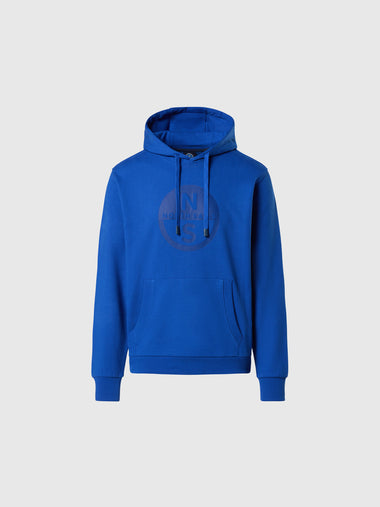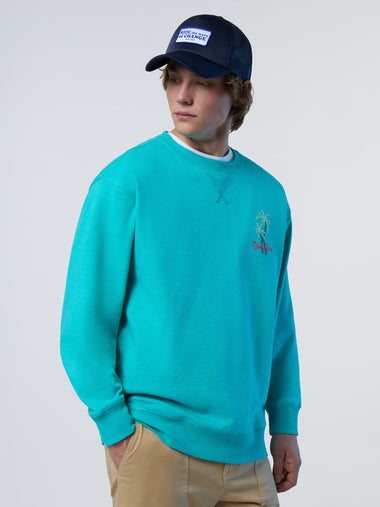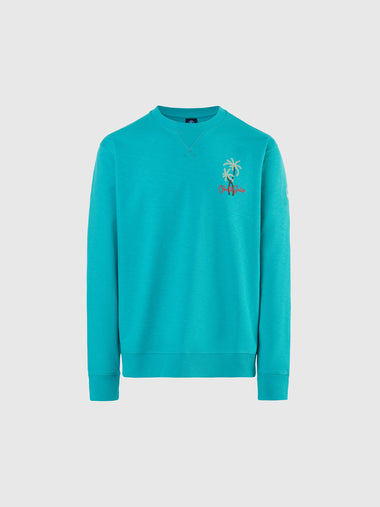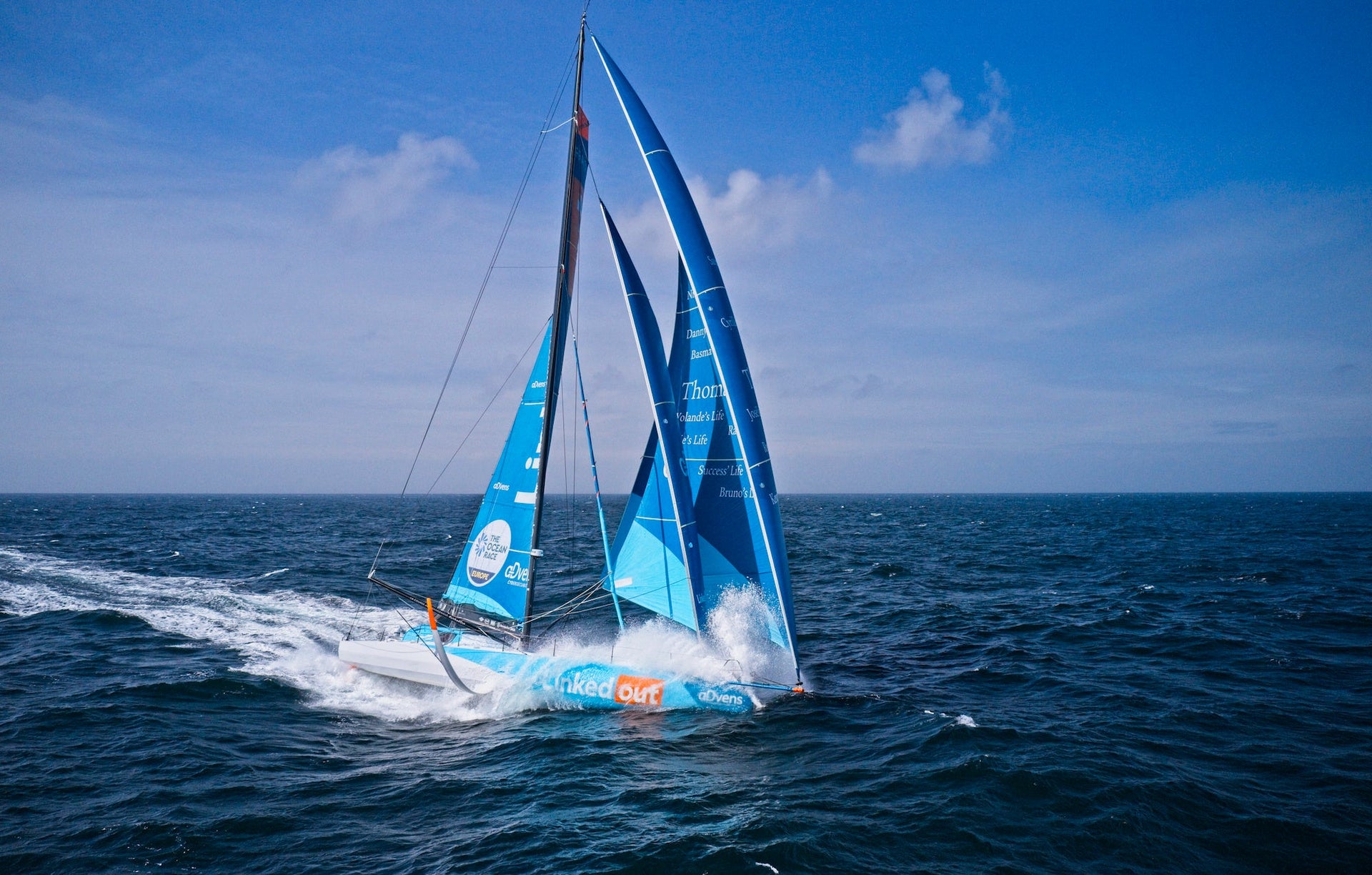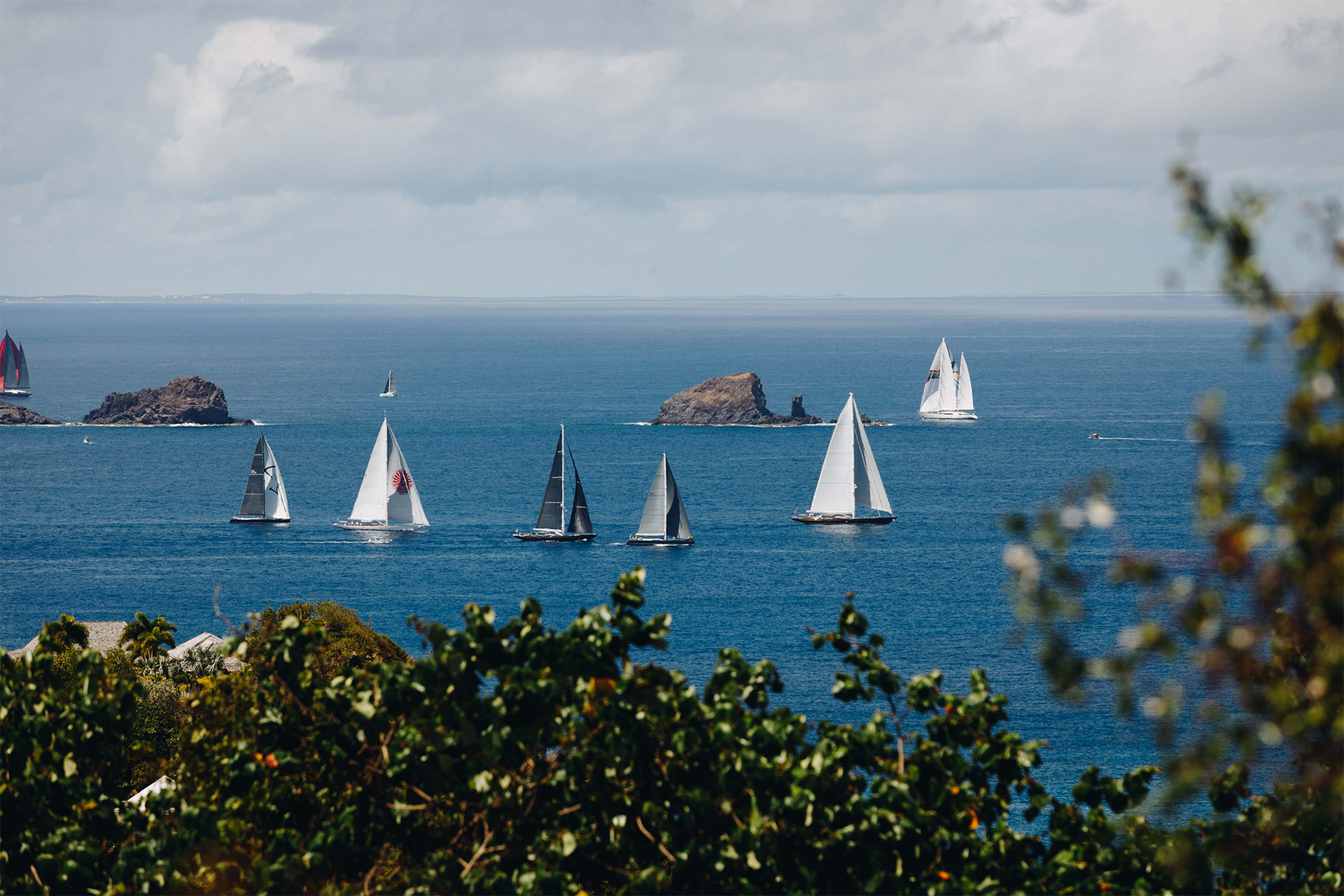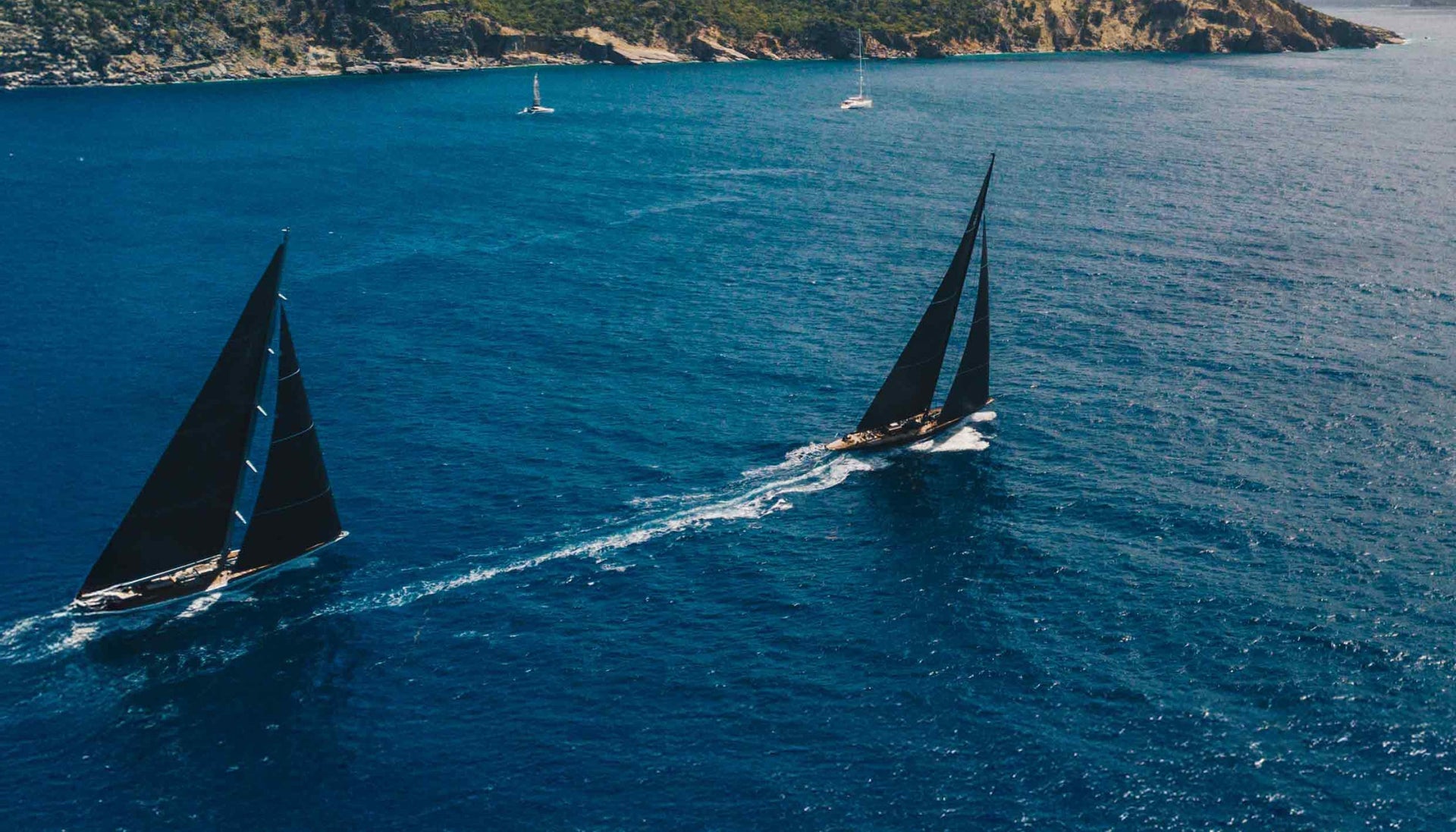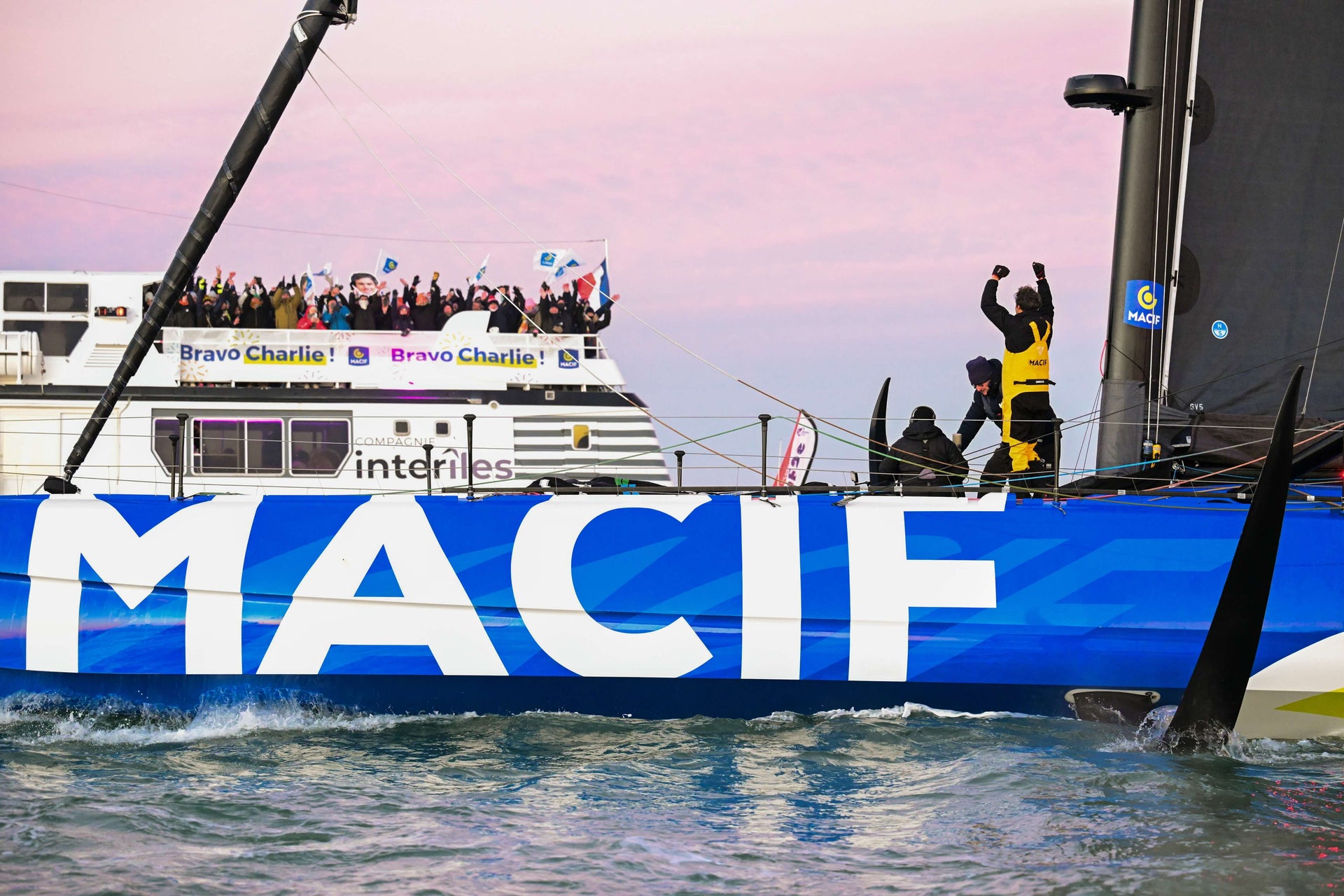SAILING OR DESIGNING?
SAILING OR DESIGNING?
Why choose when you can have both (and benefit from it)
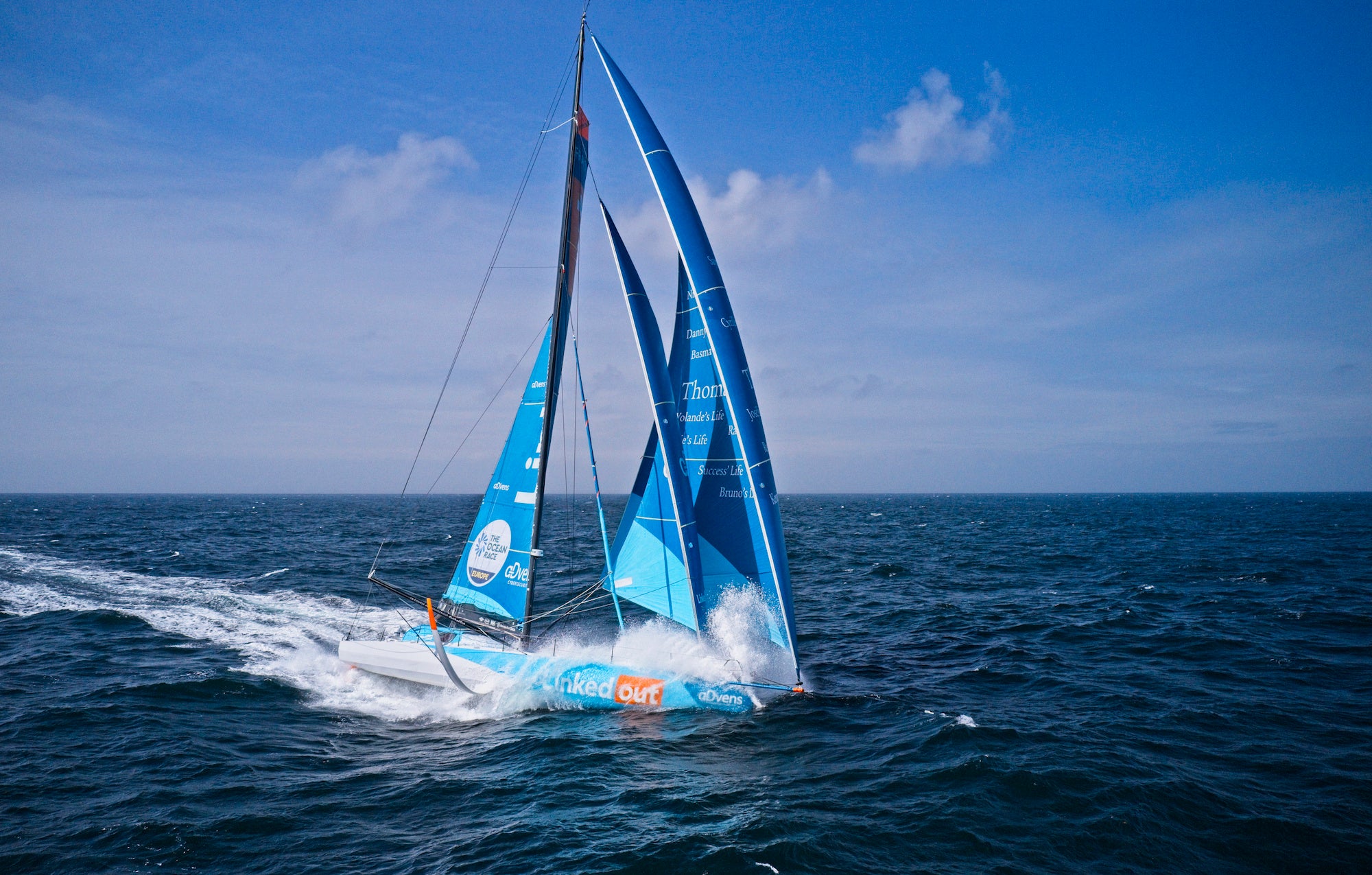
For North Sails designer Quentin Ponroy, creating the sails for the LinkedOut IMOCA 60 didn’t stop once the plans left his desk. A keen sailor, the Frenchman took it one step further and joined Thomas Ruyant and his crew for The Ocean Race Europe, a committed way to put the theory to the test – and think of solutions for the future.
“I’m a field designer”, says Ponroy in his distinctly analytical tone. “I work with computer models, but I’ve got a racing background and I need to go onboard and connect the theory to what’s happening at sea.”
Having wrapped The Ocean Race Europe on June 19 in Genova, Italy, Ponroy is so modest he plays the whole thing down by focusing on the technical aspect of the race and the learnings he’s bringing back to North Sails. The reality is though, he did join a professional crew of four sailors (skipper Thomas Ruyant and fellow Vendée Globe 2021-21 finisher Clarisse Crémer, Morgan Lagravière, Laurent Bourgue
“This was a first for me in many ways though,” he adds. “I’m not used to this style of boat and competition.”

It went well, very well for Ponroy– the conditions were varied, allowing them to try all the sails and trim non-stop, and the crew eventually took third overall. But Ponroy doesn’t dwell on that. As he steps back into his office routine he has tons of learnings he can use going forward.
“We’ve already designed two sets of sails for this boat together with Antoine Koch (who’s in charge of the sails at LinkedOut) and France-based North Sails designers Gautier Sergent and Yann Andrillon: one set for the last season, and one set for the 2020-21 Vendée Globe. That’s eight sails per set. But those working sessions on the water were short. Boats are often at the boatyard or out racing and we, the technicians, don’t usually have much time to work onboard.”
That’s what convinced Ponroy to join the team– well that, and his love for sailing. To have a good period of time onboard, in actual racing conditions, to help him see the things he just couldn’t anticipate back on land at the computer.
“In offshore racing, there are uncertainties related to the sea conditions, the time of day, the weather, the manoeuvres… The models can be far from reality, I think, and we see that in the sailors’ feedback. Sometimes, the sails aren’t behaving like we thought they would. We’re confident in our upwind sails, but some of our downwind sails have a lot more volume and are harder to design. We must be doing better, in particular in rough seas where the boats accelerate and slow down a lot.
“At North Sails, we want to find answers to these questions.”

#1 Reliability
Reliability. It’s “one of the most important factors when designing a sail” according to Ponroy. It needs to last– especially when it’s going around the world.
“We already noticed some unusual things after the Vendée Globe, in particular on the sails of the new foiling boats. In light winds, LinkedOut behaves like a traditional IMOCA 60 equipped with only a keel and daggerboards. When she accelerates though, the foils create a lot of power and the boat feels like a multihull. The loads, the speed, the sounds – everything is higher. But the hull remains the same big monohull so when you hit a wave you’re brought to a violent halt.
“I think I now understand some things that we didn’t quite foresee in our models: on foiling boats like these, it’s not just the boat but the sails that are submitted to higher loads, too.”
The loads are higher and the speed range wider. When their target sailing speed was 25 knots, Ponroy observed the boat’s speeds actually fluctuated between 20 to 30 knots– and no that wasn’t because of a novice helmsperson.
“This impacts the sails in two different ways,” he says. “First, when the boat stops in a wave and suddenly loses 10 knots of speed, there is a load peak in the sails that’s very high. That was my first strong impression and it’s something we need to take into account in our design.”
Because the crew tend to trim based on the lower speed range, the sails aren’t trimmed enough and flap a lot whenever the boat accelerates. The Stay Sails suffer from that more than the others.
“Sails don’t particularly love flapping,” he jokes, “so we need to implement solutions to stop it from damaging the sails.”

#2 Sail shape & Helix Structured Luff
A North Sails exclusive, Helix Structured Luff sails are designed to redistribute rig loads from a cable or headstay into the sail membrane, placing more load on the luff.
“The IMOCA 60 class started to adopt it a couple of years ago,” Ponroy said. “We’re now noticing that Helix Structured Luff is good when out at sea with the auto-pilot on, but could be better. That’s exactly why it was so beneficial to be onboard.”
“Having observed it onboard LinkedOut, I think a full, 100% Helix sail isn’t quite realistic on these boats that are mostly single-handedly sailed. If the loads are entirely placed on the sails, it causes luff instability. I think 50/50 is a good target for now, allowing us to benefit from Helix’s main quality, an optimal and evolutive sail shape.”
With these boats performing faster every year, Ponroy reckons we’re heading towards very flat sails with forward volumes. “The downwind sails look more and more like upwind ones these days. The surface difference between the main and foresails is key and needs to be calculated properly.”

#3 Manoeuvres
“I did almost all of them at the bow with Thomas,” he smiles. “It’s been great. I knew most of the moves but learned how long and how complex some of them are. We were a five-person crew so it’s not even single-handed sailing, but it was really enlightening and will allow me to be more precise and think of more coherent sail selections going forward.”
For Ponroy, allowing more overlaps between every sail is a key learning from these weeks at sea. “It allows the sailor to delay some manoeuvres and not always have to change a sail. It gives them more options.
“The more versatile a sail is, the more you can use it, the further you can push it.”





